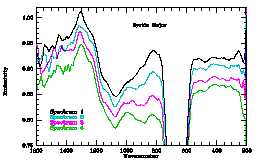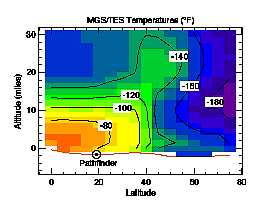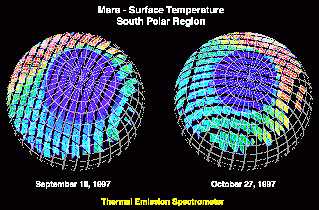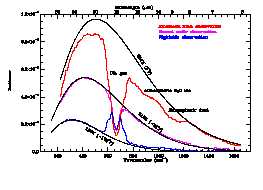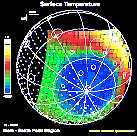
Water Ice Clouds Imaged by TES
The TES instrument has identified water-ice clouds using the infrared spectral signature of ice. These clouds are warmer than the surface at night and cooler during the day. This set of four images shows the occurence of clouds over the Tharsis volcanic region, which includes Olympus Mons and three other large volcanoes. This area is the cloudiest region that TES has observed. In addition, the TES has discovered that clouds cover this region at night, in addition to those that are often observed in visible images. The variations in water-ice cloud occurrence will provide important clues to the temperature and dynamics of the Martian atmosphere, as well as clues to the transport of water between the surface, atmosphere, and poles.
The four images below were acquired on four separate orbits (17, 24,
31, and 22, from left to right) as the MGS spacecraft approached the planet.
Clouds over the Tharsis region are clearly evident as the planet rotates.

